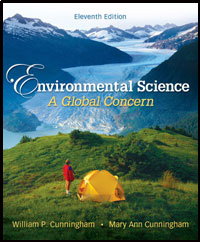1 A) involving competing interests attempting to shape public policy to best serve their own goals. B) encouraging compromise and attempting to balance competing interests. C) using rules to assure the civility of the process. D) all of the above. 2 A) it is difficult for scientific data to be brought into play. B) costs of implementing policies determined in this manner would typically be higher than produced by other models. C) many conflicting needs can not be validly compared. D) all of the above. 3 A) develop proposals, then build support, then enact law, and then implement policy. B) develop proposals, then enact law, then implement policy, and then build support. C) build support, then develop proposals, then enact law and then implement policy. D) develop proposals, then enact law, then build support and then implement policy. 4 A) state and local action potentially affecting the environment. B) federal project having possible environmental side effects. C) proposal that would increase pollution of the nation's air or water. D) federal project having significant consequences for environmental quality. 5 A) administrative law. B) statute law. C) case law. D) all of the above. 6 A) Executive B) Judicial C) Legislative D) all of the above 7 A) a device whereby legislators attach to unrelated bills amendments that lacked enough public support to become law on their own. B) a special amendment that can be added to a bill only with unanimous consent of the legislative body. C) a means by which the judicial branch of government can modify a law passed by Congress. D) a congressional staff method of moving bills between subcommittees. 8 A) funds the remediation of abandoned toxic sites. B) avoids establishing liability. C) was not established until 2006. D) none of the above. 9 A) get to the factual basis of a prior court case to overturn a more recent court decision. B) intimidate citizens to keep them from taking businesses to court. C) obtain significant court-ordered punitive damages. D) embarrass polluting corporations. 10 A) TRUE B) FALSE 11 A) TRUE B) FALSE 12 A) TRUE B) FALSE 13 A) TRUE B) FALSE 14 A) TRUE B) FALSE 15 A) TRUE B) FALSE 16 A) TRUE B) FALSE 17 A) organizing protests B) public education campaigns C) TV ads D) All of the above. 18 A) antecedent B) precedent C) exemplar D) paradigm 19 A) they often represent nothing more than the good intentions of the signatories B) there is no governing body to enforce international environmental protection C) only a few have ever been written and most do not deal with environmental issues D) 1 and 2 are correct E) All of the above are correct. 20 A) monitor how conditions are changing B) adapt our policies to the unexpected C) learn by doing D) All of the above





